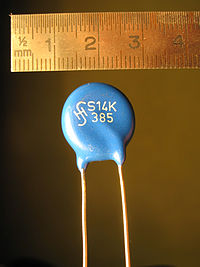
Help to go: T cells transfer CD40L to antigen‐presenting B cells
Sign Up to like & getrecommendations! Published in 2017 at "European Journal of Immunology"
DOI: 10.1002/eji.201646786
Abstract: Most immune cell communication takes place by intercellular transfer of cytokines or the contact‐dependent interaction of surface receptors in immunological synapses. In this issue of the European Journal of Immunology, Gardell and Parker (Eur. J.… read more here.
Keywords: contact dependent; help cells; antigen; cell ... See more keywords

Contact‐dependent, polarized acidification response during neutrophil–epithelial interactions
Sign Up to like & getrecommendations! Published in 2022 at "Journal of Leukocyte Biology"
DOI: 10.1002/jlb.3ma0422-742r
Abstract: Neutrophil (PMN) infiltration during active inflammation imprints changes in the local tissue environment. Such responses are often accompanied by significant extracellular acidosis that result in predictable transcriptional responses. In this study, we explore the mechanisms… read more here.
Keywords: acidification response; acidification; dependent polarized; contact dependent ... See more keywords

Contact-dependent delivery of IL-2 by dendritic cells to CD4 T cells in the contraction phase promotes their long-term survival
Sign Up to like & getrecommendations! Published in 2019 at "Protein & Cell"
DOI: 10.1007/s13238-019-00662-0
Abstract: Common γ chain cytokines are important for immune memory formation. Among them, the role of IL-2 remains to be fully explored. It has been suggested that this cytokine is critically needed in the late phase… read more here.
Keywords: phase; cd4 cells; contact dependent; dendritic cells ... See more keywords

Alkylation of a hydrophilic photosensitizer enhances the contact-dependent photo-induced oxidation of phospholipid membranes
Sign Up to like & getrecommendations! Published in 2021 at "Dyes and Pigments"
DOI: 10.1016/j.dyepig.2020.109131
Abstract: Abstract Lipophilic photosensitizers able to photo-induce lipid oxidation in biomembranes are, in general, much more efficient than hydrophilic ones; acting through the formation of singlet oxygen (1O2), which oxidizes the fatty acid double bonds (type… read more here.
Keywords: oxidation; contact dependent; photo; ptr ... See more keywords

Contact-dependent interbacterial toxins deliver a message.
Sign Up to like & getrecommendations! Published in 2018 at "Current opinion in microbiology"
DOI: 10.1016/j.mib.2017.09.011
Abstract: Both Gram-negative and Gram-positive organisms harbor systems for delivering toxins to neighboring bacteria upon direct cell contact. These systems, typified by type VI secretion (T6S) and contact-dependent growth inhibition (CDI) systems, are defined by their… read more here.
Keywords: contact dependent; dependent toxin; contact; interbacterial competition ... See more keywords

Contact-Dependent Interbacterial Antagonism Mediated by Protein Secretion Machines.
Sign Up to like & getrecommendations! Published in 2020 at "Trends in microbiology"
DOI: 10.1016/j.tim.2020.01.003
Abstract: To establish and maintain an ecological niche, bacteria employ a wide range of pathways to inhibit the growth of their microbial competitors. Some of these pathways, such as those that produce antibiotics or bacteriocins, exert… read more here.
Keywords: contact dependent; protein secretion; interbacterial antagonism; dependent interbacterial ... See more keywords

Diversity of Pseudomonas aeruginosa contact-dependent growth inhibition systems.
Sign Up to like & getrecommendations! Published in 2019 at "Journal of bacteriology"
DOI: 10.1128/jb.00776-18
Abstract: Contact-dependent growth inhibition (CDI) systems are used in bacterial competition to hinder the growth of neighboring microbes. These systems utilize a two-partner secretion mechanism to display the CdiA exoprotein at the bacterial cell surface. CdiA… read more here.
Keywords: growth; growth inhibition; contact dependent; cdi systems ... See more keywords

Natural killer cells kill extracellular Pseudomonas aeruginosa using contact-dependent release of granzymes B and H
Sign Up to like & getrecommendations! Published in 2022 at "PLoS Pathogens"
DOI: 10.1371/journal.ppat.1010325
Abstract: Pseudomonas aeruginosa is an opportunistic pathogen that often infects individuals with the genetic disease cystic fibrosis, and contributes to airway blockage and loss of lung function. Natural killer (NK) cells are cytotoxic, granular lymphocytes that… read more here.
Keywords: cells kill; cell; pseudomonas aeruginosa; natural killer ... See more keywords

A Tad-like apparatus is required for contact-dependent prey killing in predatory social bacteria
Sign Up to like & getrecommendations! Published in 2021 at "eLife"
DOI: 10.7554/elife.72409
Abstract: Myxococcus xanthus, a soil bacterium, predates collectively using motility to invade prey colonies. Prey lysis is mostly thought to rely on secreted factors, cocktails of antibiotics and enzymes, and direct contact with Myxococcus cells. In… read more here.
Keywords: like apparatus; contact dependent; apparatus required; tad like ... See more keywords